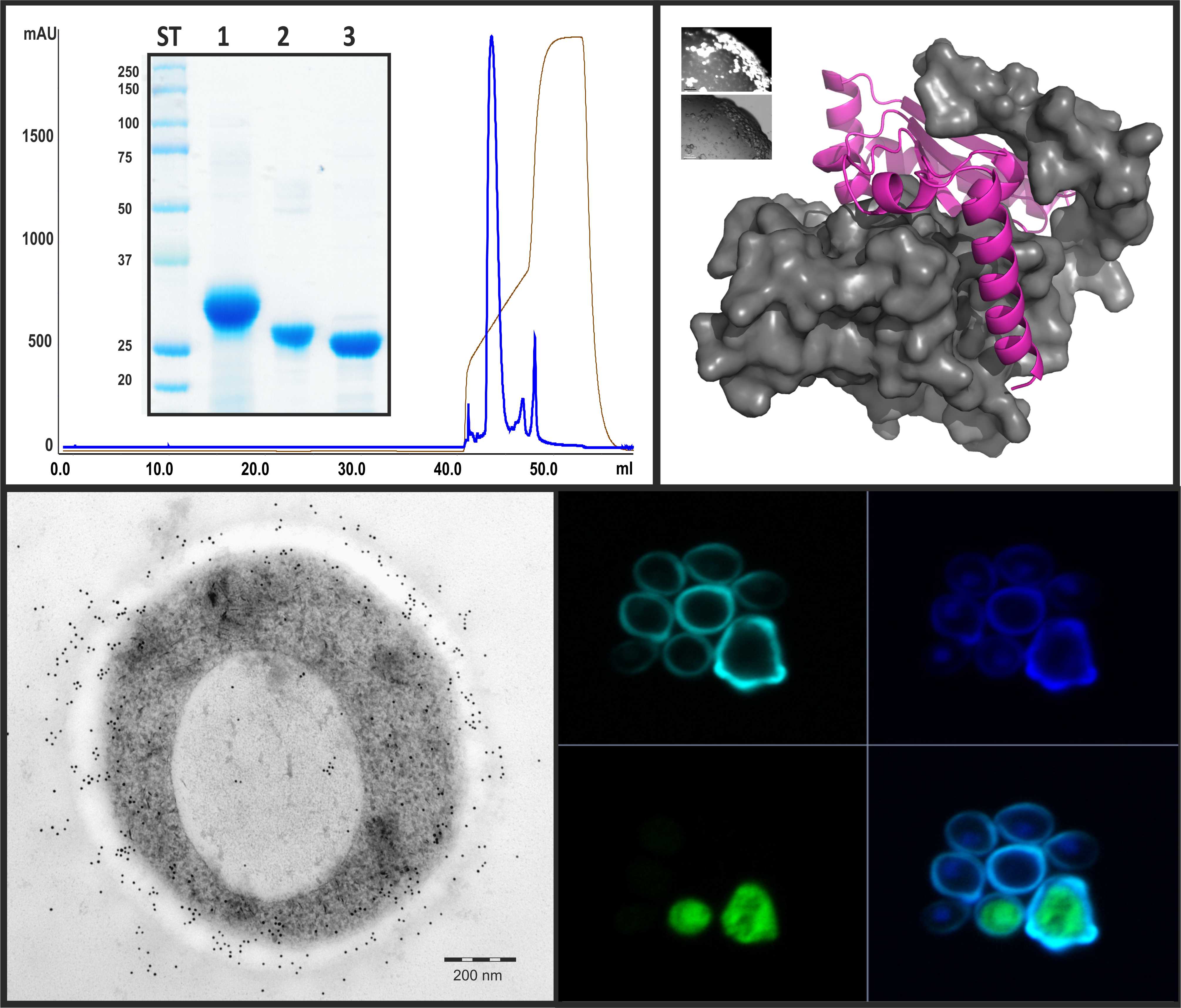Carbonic anhydrases of Candida species as targets for development of specific antimycotics
Candida albicans and Candida parapsilosis, opportunistic human pathogens naturally present in the microflora of healthy individuals, represent a serious threat to immunocompromised patients. Pathogenic Candida species have evolved the ability to proliferate in niches as diverse as human skin, gut, blood, and mucosal surfaces. Among other factors, these niches differ in CO2 concentration, which is more than 150-fold higher in blood than in atmospheric air.
To cope with such differences, Candida produces carbonic anhydrase (CA, EC 4.2.1.1), which is encoded by the NCE103 gene and catalyzes reversible hydration of CO2 into bicarbonate. CA is dispensable during bloodstream infections, but it is essential for survival of the fungus on skin or abiotic surfaces.

Fungal CAs are structurally unrelated to human CAs, which makes them an ideal target for prophylactic interventions. Our research is focused on structure-function analysis of CA encoded by the NCE103 genes of Candida albicans and Candida parapsilosis and on development of novel inhibitors that may be useful for ointments or disinfectants.
Project publications
- Dostál J., Brynda J., Vaňková L., Zia S. R., Pichová I., Heidingsfeld O., Lepšík M.: Structural determinants for subnanomolar inhibition of the secreted aspartic protease Sapp1p from Candida parapsilosis. J. Enzyme Inhib. Med. Chem. 2021, 36(1):914-921.
- Dostál J., Blaha J., Hadravová R., Hubálek M., Heidingsfeld O., Pichová I.: Cellular Localization of Carbonic Anhydrase Nce103p in Candida albicans and Candida parapsilosis. Int. J. Mol. Sci. 2020, 21(3):850.
- Dostál J., Brynda J., Blaha J., Macháček S., Heidingsfeld O., Pichová I.: Crystal structure of carbonic anhydrase CaNce103p from the pathogenic yeast Candida albicans. BMC Struct. Biol. 2018, 18:14.
People
Jiří Dostál, Olga Heidingsfeld, Magdalena Škrlová, Elena Dolejší

